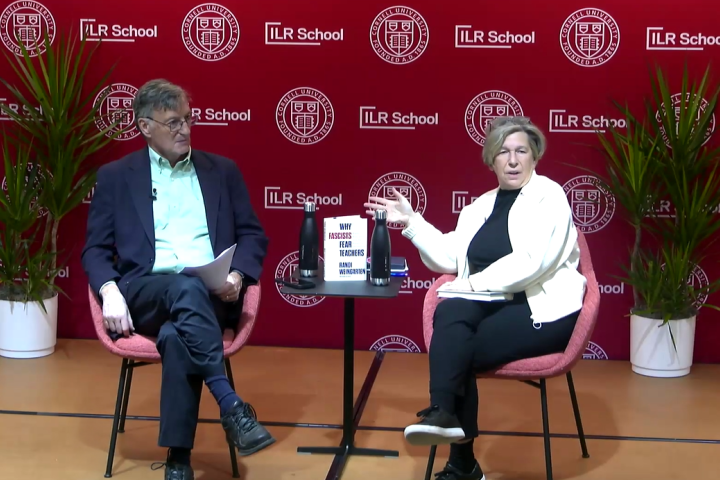
Prejudice Against Those With Epilepsy in the Workplace
By Dr. Katherine Simpson, Scheinman Institute Postdoctoral Associate
Epilepsy is the fourth most common neurological condition in the US. Even though epilepsy is common, it remains a shunned condition – one whose history can be summarized as “4000 years of ignorance, superstition and stigma, followed by 100 years of knowledge, superstition and stigma.”
Given that epilepsy features in the origin stories of many world religions, most Americans have some idea of epilepsy. Nonetheless, studies show that “half of all people with epilepsy have confronted stigma based on their condition, and many Americans are frightened to be alone with seizure-prone people, who they believe are unreliable, less likely to be successful.”
These prejudices persist, even though reliable, brave, and enormously successful individuals have had epilepsy. Aristotle, Socrates, Vincent van Gogh, Alfred Nobel, Joan of Arc, Napoleon Bonaparte, The-Artist-Formerly-Known-As-Prince, Sir Isaac Newton, Agatha Christie, and Theodore Roosevelt, are each said to have had epilepsy.
Harriet Tubman also had epilepsy when she bravely led 300 enslaved persons to freedom as a conductor on the Underground Railroad, never losing a single passenger. Chief Justice John Roberts has had multiple seizures, and as a result endures disability-based harassment when he votes with liberal justices. This is a kind of criticism and harassment that Justices who are not disabled do not experience.
Prejudice against people with epilepsy is often more debilitating than the condition itself, and these prejudices keep many talented individuals from fully participating in the workforce.
Indeed, this is a frequent subject of arbitration and litigation, where workers – whether unionized or not – bring claims against employers alleging that they were driven from the workplace, due to their epilepsy. Workplace and professional bullying of people with disabilities is unfortunately common, even in 2024.
Prejudice against epilepsy has historically played a role in the resolution of disability-related disputes.
Many decision makers – judges and arbitrators alike – decide the employability of persons with epilepsy based on their own prejudice and childhood knowledge of disability, rather than objective fact or expert testimony. There is room to improve the substantive consideration of disability.
Each person with a disability needs to feel safe and have colleagues who will not doubt their work and who are not afraid of them or their condition. This is an essential pre-requisite to their full and efficient participation in the workplace, and/or as independent contractors (neutrals) or as witnesses in ADR.
Whether they know it or not, every advocate, neutral, party representative, disputing party, student, and professor has a vested interest in disability inclusion. Each person who is not yet living with a disability is just one minor illness or injury away from permanent disability, and/or from the worsening of an existing potentially disabling condition into a disability. Epilepsy is just such an equal opportunity condition: each person is just one minor illness or injury away from having epilepsy, if they do not already have it.
About Dr. Katherine Simpson
Dr. Katherine Simpson, Esq., FCIArb. is an Arbitrator with Simpson Dispute Resolution and a Postdoctoral Associate at the Scheinman Institute on Conflict Resolution.
She is a leader in several efforts to increase diversity in Alternative Dispute Resolution (ADR), and currently serves as Vice Chair of the Board for the Ray Corollary Initiative, Chair of the Women in Dispute Resolution (WIDR) Committee of the American Bar Association (ABA) Dispute Resolution Section, and as Co-Chair of the Diversity Committee for the College of Commercial Arbitrators.
Her independent project, “CETA – Where are the Women” (2020) helped persuade the European Union to change how arbitrators are appointed in trade and investment disputes.
Simpson’s newest work on diversity and inclusion in ADR responds to the International Chamber of Commerce’s Guide for Disability Inclusion in International Arbitration and ADR.
Her upcoming paper discusses ways to make ADR processes safer, more fair, and more inclusive for neutrals, counsel, and ADR users who have disabilities - even undisclosed, invisible, or not-immediately-apparent ones.



